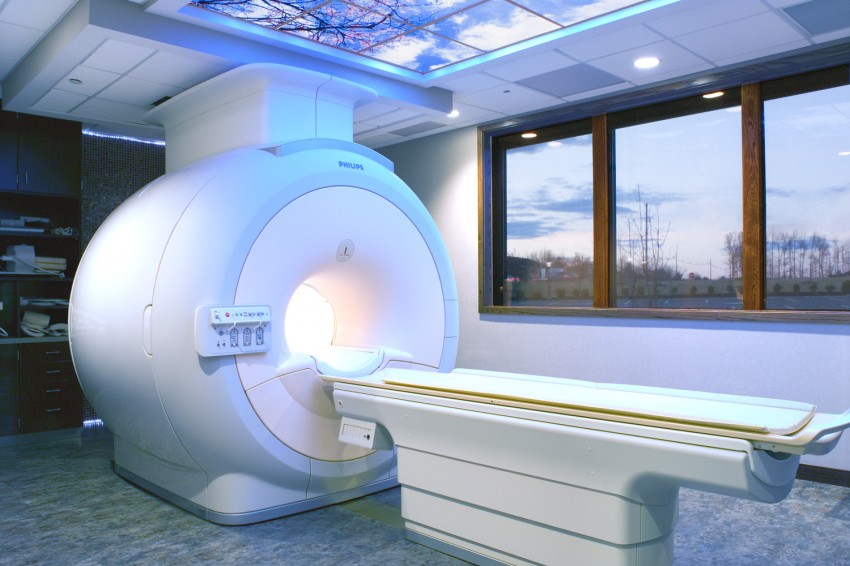
Your Doctor Prescribed a Transvaginal Ultrasound: Here’s What You Should Know

Ultrasound imaging provides a wealth of detailed information about the structures inside of your body as well as the processes that are going on, obtaining “still” photographs as well as real-time video images that demonstrate how well your body is performing certain functions. Most ultrasound exams obtain those images by passing a handheld device called a transducer over the surface of the skin, emitting ultrasound waves painlessly through the skin to the target area that’s being evaluated and visualized.
But for some gynecological and urological conditions or symptoms, including issues like endometriosis, uterine fibroids and and other issues affecting the ovaries, fallopian tubes, uterus and bladder, passing the transducer over the surface of the skin simply can’t obtain the detailed images necessary for diagnosing problems and managing ongoing treatments. In those cases, a transvaginal ultrasound procedure can be extremely useful.
What is a transvaginal ultrasound?
Transvaginal ultrasounds use a special transducer that’s shaped sort of like a wand. The transducer is lubricated and then gently inserted into the vagina. Like the traditional transducer that’s passed over the skin, the transducer used in a transvaginal ultrasounds painlessly emits sound waves to obtain images. Because it’s inserted into the vagina, the wand is able to obtain images of structures and processes that simply cannot be adequately “imaged” through the skin.
When are transvaginal ultrasounds performed?
Transvaginal ultrasounds are often prescribed for women with issues like pelvic pain, abnormal bleeding (including very heavy bleeding and bleeding between periods), unusual cramping or some types of fertility problems or urinary tract symptoms. They can also be performed to help manage ongoing treatment in women diagnosed with certain types of gynecological or urological conditions.
How do transvaginal ultrasounds work?
Transvaginal ultrasounds obtain images in the same way as an ultrasound exam that’s performed “through the skin.” The wand-shaped transducer emits ultrasound energy waves that pass through the vaginal wall and “bounce off” internal structures. These returning ultrasound waves are captured by the transducer and transmitted to the ultrasound machine, which uses the data to create images using special software. The images can be viewed immediately on the computer monitor and also saved for future viewing and evaluation by the doctor.
Unlike x-rays, ultrasounds don’t use ionizing radiation, so you don’t need to worry about being exposed to radiation during the procedure. Plus, ultrasounds can provide detailed information about soft tissue structures and processes like circulation or other fluid movements that simply can’t be obtained with some other types of diagnostic imaging. The exam itself is relatively quick, and no sedation or anesthesia is required.
Here’s what to expect during your transvaginal ultrasound.
Like other types of ultrasound exams, transvaginal ultrasound evaluations are performed in a darkened room to make it easier for the technician to see the images as they appear on the computer monitor. Prior to the exam, you may be asked to empty your bladder, and you’ll need to change into a gown and remove your clothing from the waist down.
Next, you’ll lie on the exam table on your back, and the lubricated wand will be gently inserted into your vagina. During the exam, the wand will be pressed against the walls of the vaginal canal to make it easier to obtain the clearest images. Some women may find the procedure somewhat uncomfortable as a result of the pressure exerted by the transducer; breathing deeply can help relax the muscles to relieve any minor discomfort that may occur. Most exams take about 15 to 20 minutes. Once the exam is complete, you’ll be free to resume your normal activities.
RAI is focused on your health – and your comfort.
Transvaginal ultrasounds can play an important role in helping women maintain optimal gynecological and urological health. Although the procedure itself is safe and relatively quick, we understand some women may be nervous about having a transvaginal ultrasound for the first time. You may have questions or concerns – and we can help. Our team is skilled in transvaginal ultrasounds using the most advanced, state-of-the-art techniques for the fastest exams and most accurate results, and we’re ready to answer all your questions so you feel less anxious and more confident about your evaluation.
Our state-of-the-art facilities in Hamilton and Lawrenceville are designed to support patient comfort every step of the way, ensuring your experience is positive from start to finish. If you have questions about transvaginal ultrasounds or other imaging procedures, or if you’re ready to schedule your examination, call RAI at 609-585-8800 and speak with our office staff today.





